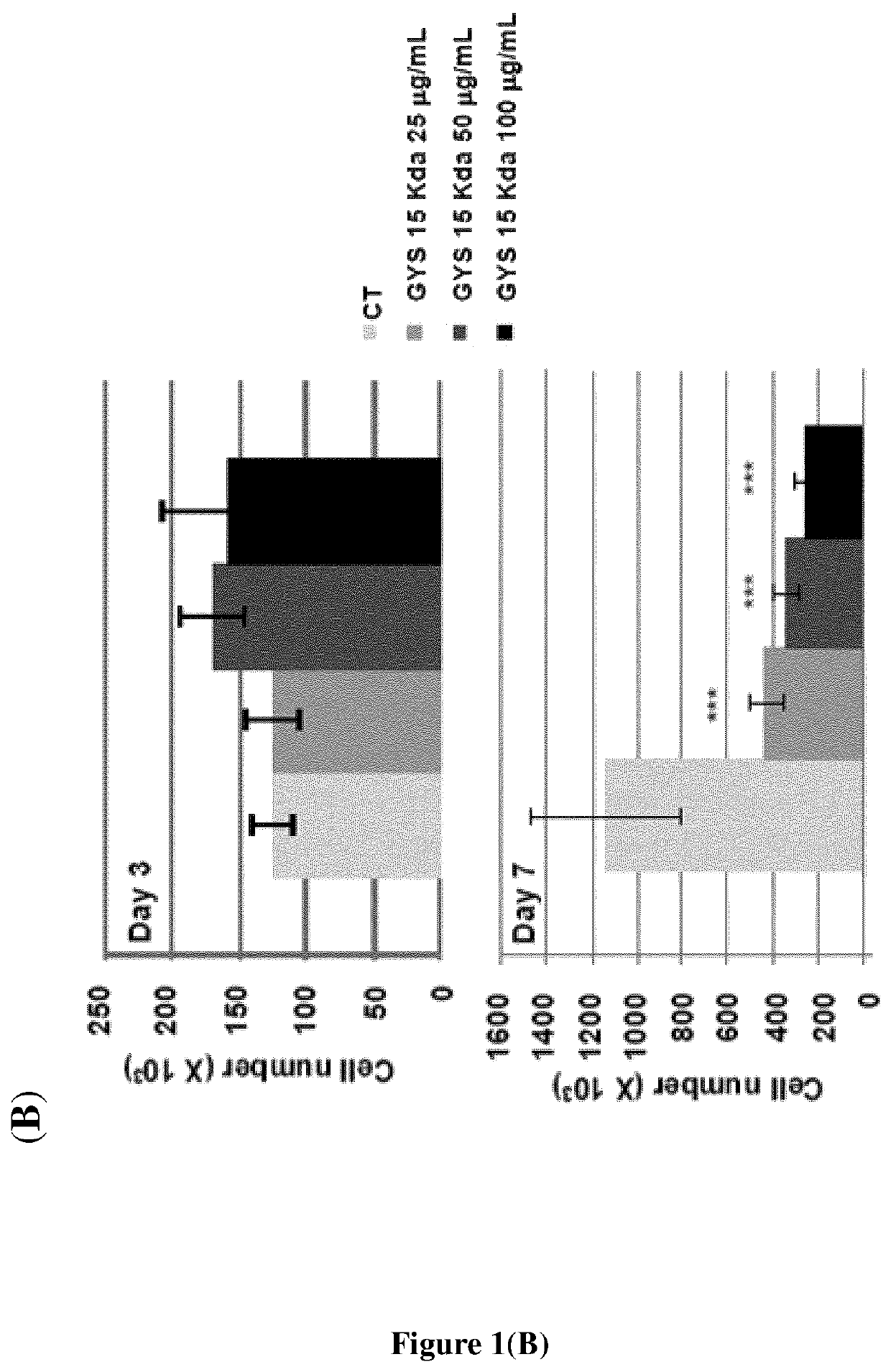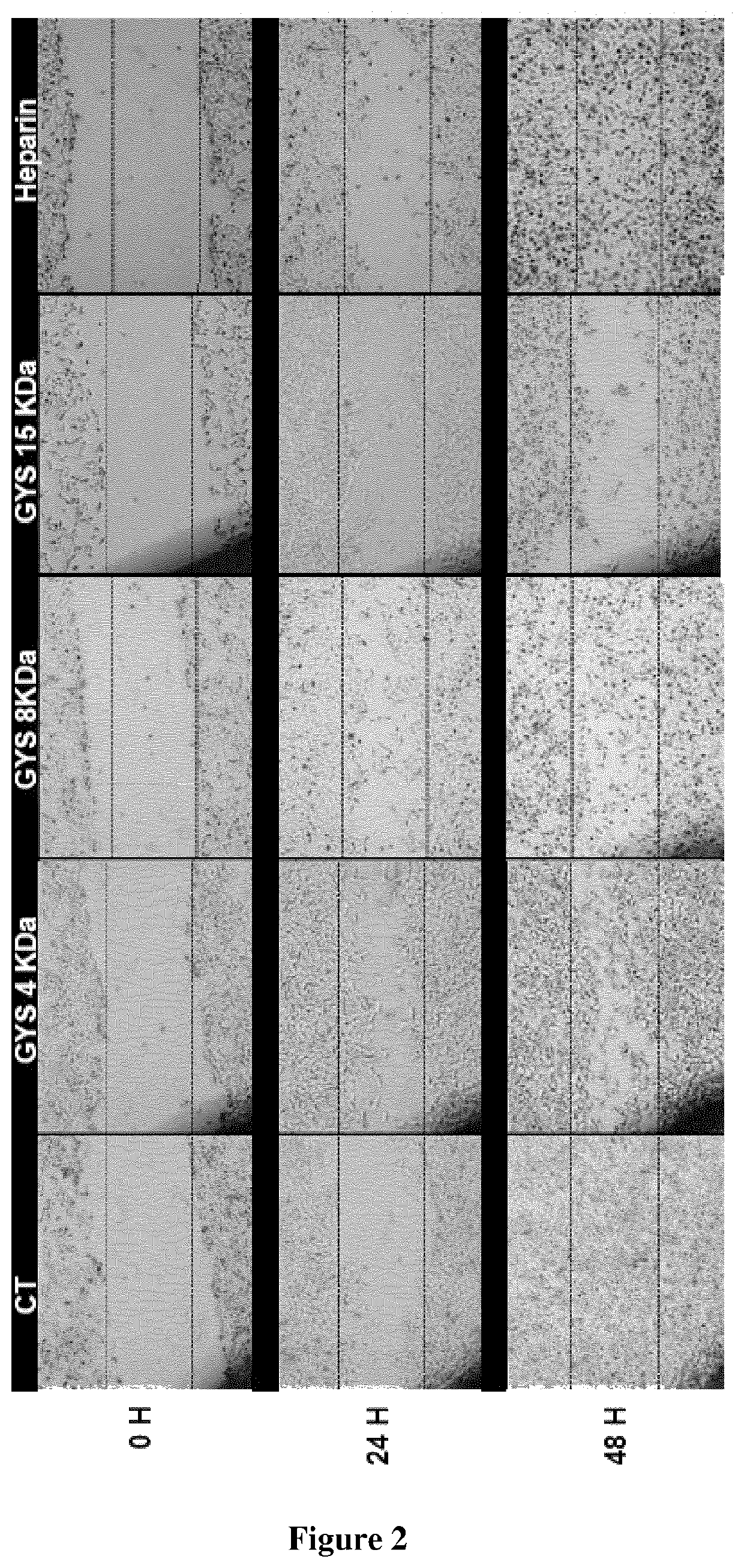Anti-metastatic marine bacterial exopolysaccharide derivative and uses thereof
a technology of anti-metastatic marine bacteria and exopolysaccharide, which is applied in the field of anti-metastatic marine bacterial exopolysaccharide derivatives, can solve the problems of poor prognosis, limited therapeutic use, and high risk of unknown cross-species contamination, and achieve the effect of inhibiting the formation of lung metastases
- Summary
- Abstract
- Description
- Claims
- Application Information
AI Technical Summary
Benefits of technology
Problems solved by technology
Method used
Image
Examples
examples
[0099]The following examples describe some of the preferred modes of making and practicing the present invention. However, it should be understood that the examples are for illustrative purposes only and are not meant to limit the scope of the invention. Furthermore, unless the description in an Example is presented in the past tense, the text, like the rest of the specification, is not intended to suggest that experiments were actually performed or data were actually obtained.
Materials and Methods
General
[0100]The bacterial GY785 exopolysaccharide (EPS) was produced, purified and characterized as previously described (Guezennec et al., Carbohydr. Polym., 1998, 37: 19-24). The preparation, purification and characterization of low molecular weight (LMW) over-sulfated (OS) EPS derivatives were performed as previously reported (Ruiz Velasco et al., Glycobiology, 2011, 21: 781-795; WO 2006 / 003290). Briefly, native high molecular weight (HMW) GY785 EPS was depolymerized first using a free...
PUM
| Property | Measurement | Unit |
|---|---|---|
| molecular weight | aaaaa | aaaaa |
| concentration | aaaaa | aaaaa |
| concentration | aaaaa | aaaaa |
Abstract
Description
Claims
Application Information
 Login to View More
Login to View More - R&D
- Intellectual Property
- Life Sciences
- Materials
- Tech Scout
- Unparalleled Data Quality
- Higher Quality Content
- 60% Fewer Hallucinations
Browse by: Latest US Patents, China's latest patents, Technical Efficacy Thesaurus, Application Domain, Technology Topic, Popular Technical Reports.
© 2025 PatSnap. All rights reserved.Legal|Privacy policy|Modern Slavery Act Transparency Statement|Sitemap|About US| Contact US: help@patsnap.com



